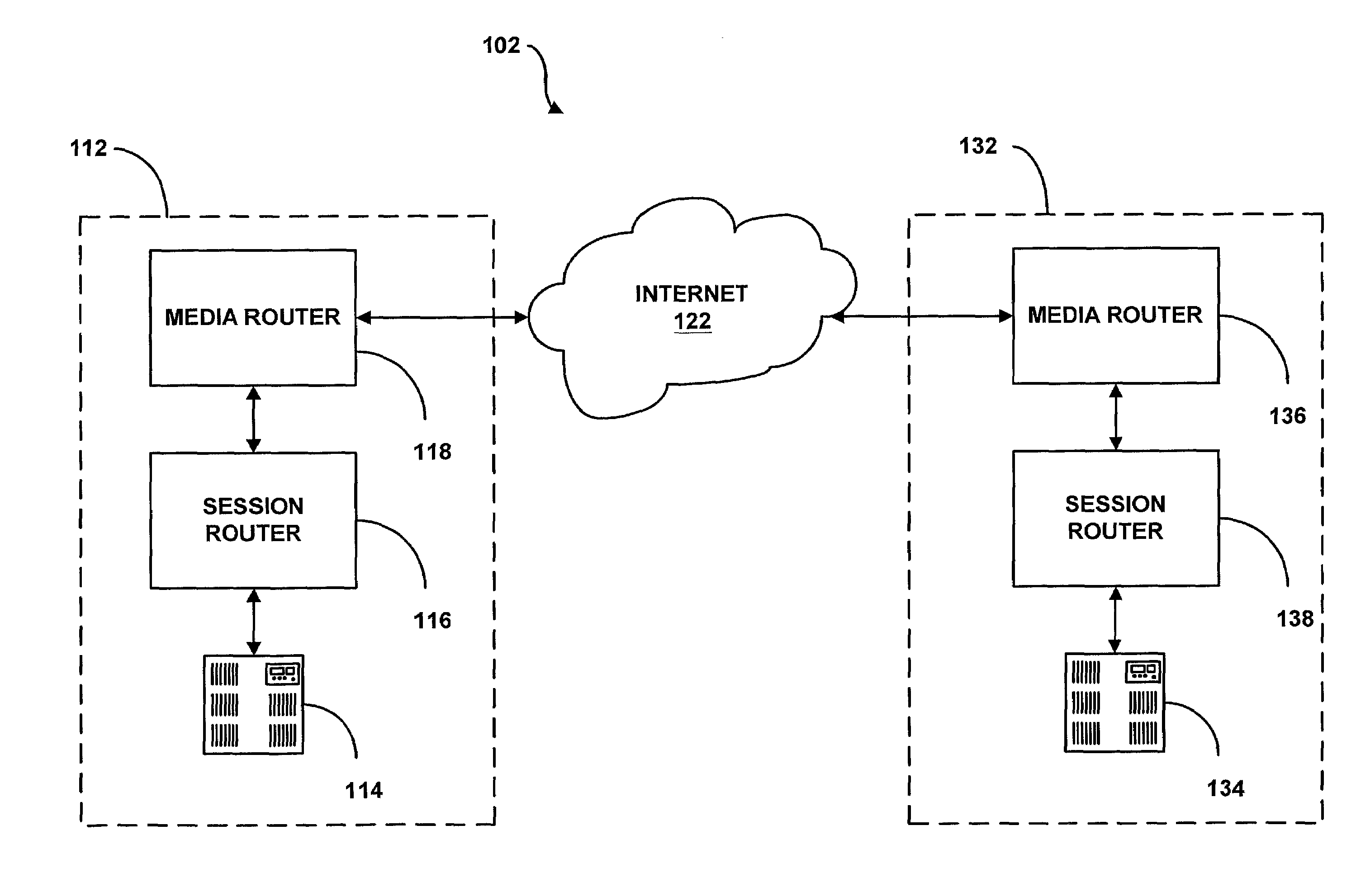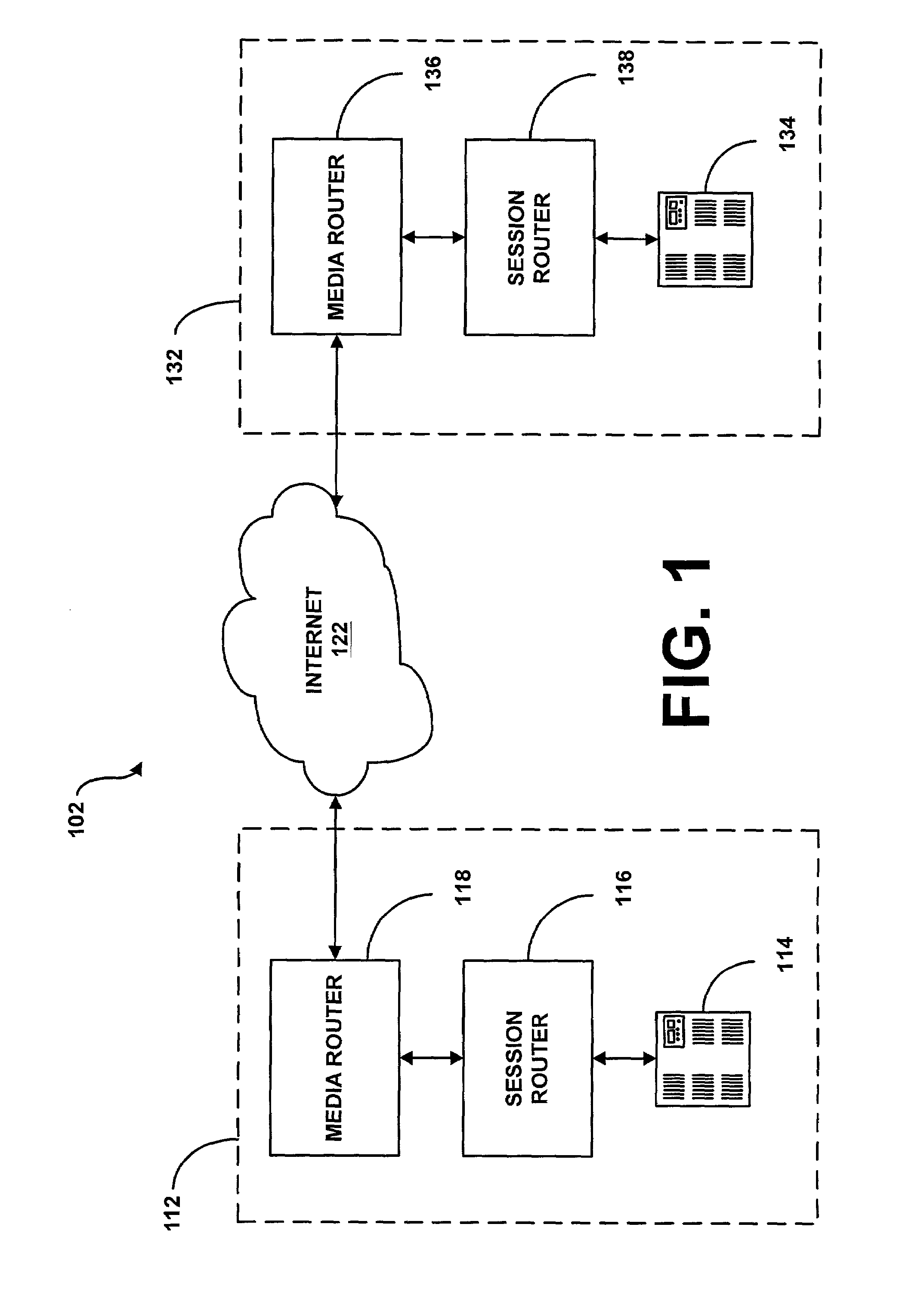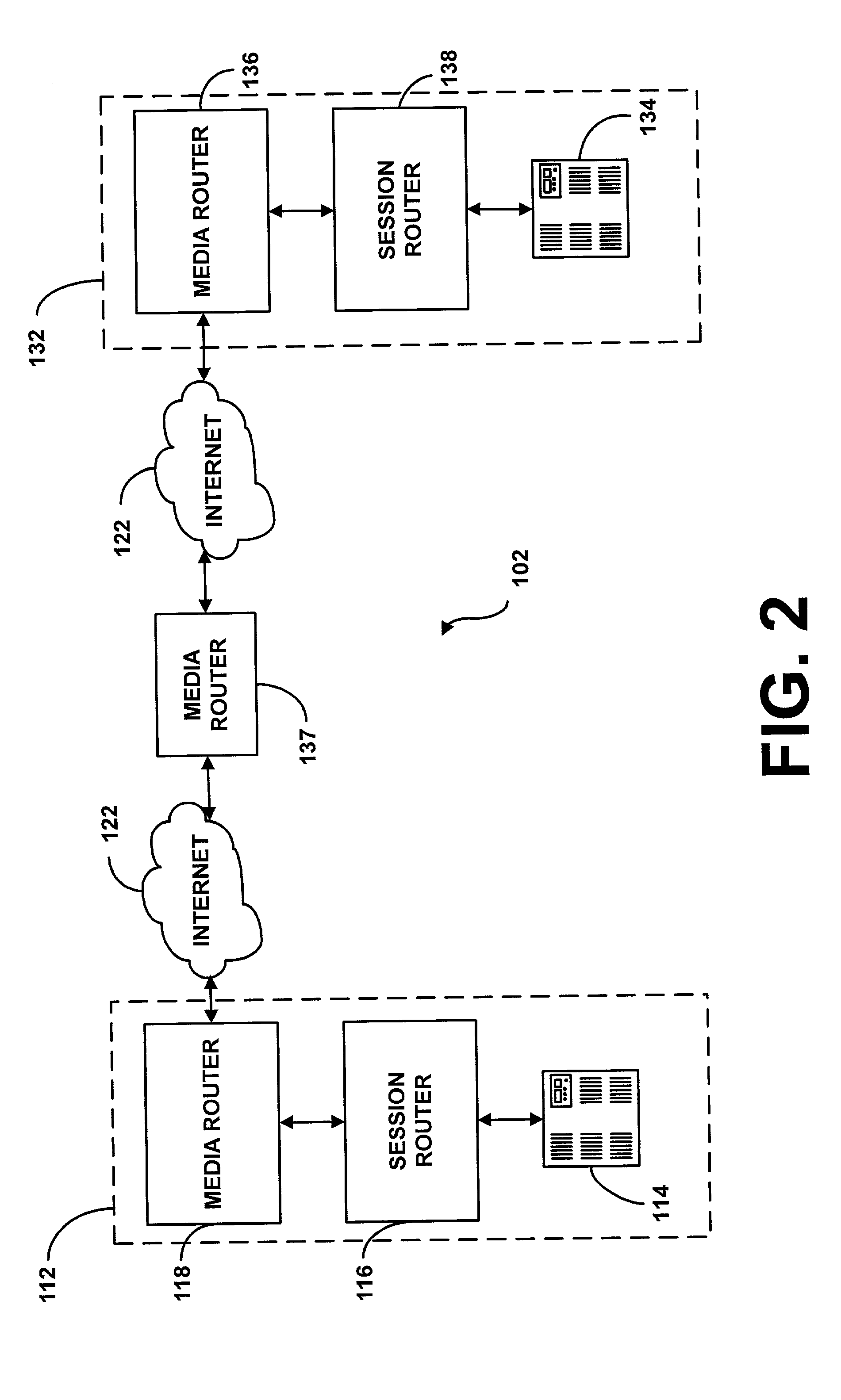System and method for providing rapid rerouting of real-time multi-media flows
a real-time multi-media flow and real-time technology, applied in the field of real-time multimedia flows, can solve the problems of not being able to assist in finding a proper transportation route, not being able to route an actual communication session on anything, and not being able to provide real-time multi-media flow rerouting,
- Summary
- Abstract
- Description
- Claims
- Application Information
AI Technical Summary
Benefits of technology
Problems solved by technology
Method used
Image
Examples
example
[0086]
Multi-media Router CommandInbound PacketPrimarysource address 129.0.0.1:3000 (IP address and Port)destination address 130.0.0.1:5000Secondarysource address 128.0.0.1:1500destination address 126.0.0.2:1400Outbound PacketPrimarysource address 131.0.0.1:3000destination address 132.0.0.2:4000Secondarysource address 133.0.0.1:1000destination address 134.0.0.1:7000
[0087]It should be noted that in accordance with the above provided example, packets received from either the primary or secondary address pairs are assumed as part of a single RTP data packet flow. Thus, packets arriving at a link that have, either the primary source and destination pair, or the secondary source and destination pair are translated. The translation is to either the primary or secondary outbound address. Specifically, if an RTP data packet arrives with a source address of 129.0.0.1:3000 and a destination address of 130.0.0.1:5000, the packet is translated to either source address 131.0.0.1:3000 and destinat...
PUM
 Login to View More
Login to View More Abstract
Description
Claims
Application Information
 Login to View More
Login to View More - R&D
- Intellectual Property
- Life Sciences
- Materials
- Tech Scout
- Unparalleled Data Quality
- Higher Quality Content
- 60% Fewer Hallucinations
Browse by: Latest US Patents, China's latest patents, Technical Efficacy Thesaurus, Application Domain, Technology Topic, Popular Technical Reports.
© 2025 PatSnap. All rights reserved.Legal|Privacy policy|Modern Slavery Act Transparency Statement|Sitemap|About US| Contact US: help@patsnap.com



